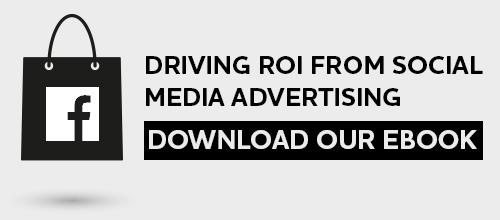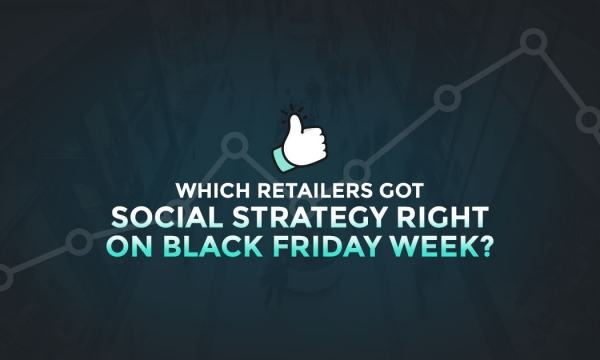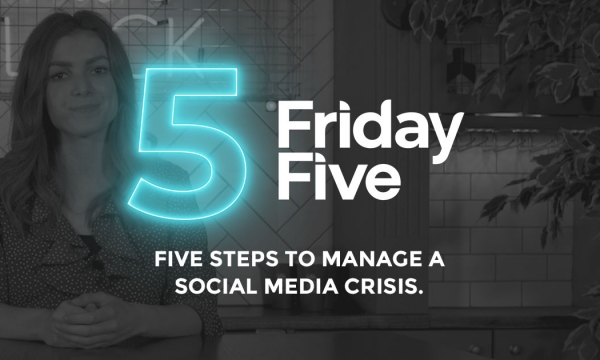
“Where is the ROI from social media?” was once a common question posed at boardroom level. Whilst there are several well established ROI models, many brands are still tentative when it comes to social media advertising.
There are some long established arguments against advertising on social platforms. As a form of advertising, some argue that it doesn’t capture audiences in a ‘purchasing’ mind-set, unlike more traditional forums of paid advertising which are usually focused on targeting more active keyword searches, or retargeting previous site visitors.
But with nearly a quarter of Facebook’s 850 million users checking their news feeds five times a day or more (Socialnomics), and with as many as 77% of B2C companies and 43% of B2B companies claiming to have acquired customers on Facebook (Business2Community), surely those concerns should be allayed?
To explore the value of social media advertising we looked into the case of our clients, a fast fashion retailer with a unique challenge.
The client
Our client was a fixed price retailer, which meant that any increases in ad spend would be particularly acute. Intense competition and high generic CPC’s in this sector had the potential to drive up costs extremely quickly. Social media advertising provided a genuine solution to drive highly targeted traffic at significantly lower cost.
Here’s how we did it.
Build a profile your audience

“Know your audience” is a common business mantra, but it rings especially true in social media advertising. Social media, Facebook in particular, is awash with data about your potential audiences, so knowing which audiences are most inclined to engage with your brand is critical.
It’s possible that you already have a degree of insight about your audiences, no matter how macro or granular. Whether you have relatively small amounts of data, or considerable levels of survey, purchase history and audience behaviour data, knowing how to apply this and identify where new and existing audiences are on social media is critical to driving a meaningful return.
Consider what your existing audiences like and dislike, how they shop, what media they consume and what other brands they connect with.
Ultimately, you are trying to build a profile of your target audience. Once you have this, you can start making the most from the data held within various social networks.
Find people who are just like your existing audiences
Once you have defined your customer persona, a profile of your ideal target audience, the next step is to find more people like them.
Having identified your existing core user base, you can use eCRM look-a-like targeting to identify people with similar profiles to your ideal customers. By importing the emails of your most valuable customers into social media platforms, you can create a target group of users who share similar demographic, interests and behavioural traits.
Similarly, we can use page look-a-like targeting and target users who like similar pages to our target audience set. This could include pages of similar brands, including competitor brands.

When we applied this strategy to our client, we found that we were able to distribute the brand’s message to a highly targeted group. Look-a-like activity delivered 88% of all sales volume from social activity, with 67% coming from eCRM targeting. These sales came at a low cost per acquisition of just £1. 43 – significantly lower than forecast and typical CPAs for paid search marketing - and drove an average order value of £23.92.
Explore and understand what your audience likes

Defining your customer persona from the outset also means that you have a greater understanding of their interests. This can range from everything from hobbies through to favourite brands, newspapers, TV shows and now event life events.
Interest targeting allows advertisers to define target audiences based on their interests, their hobbies and the Facebook pages that they like. These groups can be created based on their stated interests, their education level, job title or the groups that they belong to.
Interest based targeting contributed 12% of the client’s sales volume from social media and, whilst CPAs were slightly higher (due to the slightly less granular targeting that look-a-like targeting offers), it still delivered a strong performance for the client.
Reconnect with old customers

Whilst targeting new customers is clearly important, many brands are not fully utilising the potential of the customers that they already have.
By analysing the client’s eCRM data, we were able to identify a number of dormant accounts and accounts that were not delivering significant activity, suggesting that these customers had drifted from the brand.
We were able to use Facebook to target these users and attempt to reconnect them to the client’s brand with targeted ads. This activity is ongoing, but is delivering excellent returns to date with a CPA of approximately £1.43.



